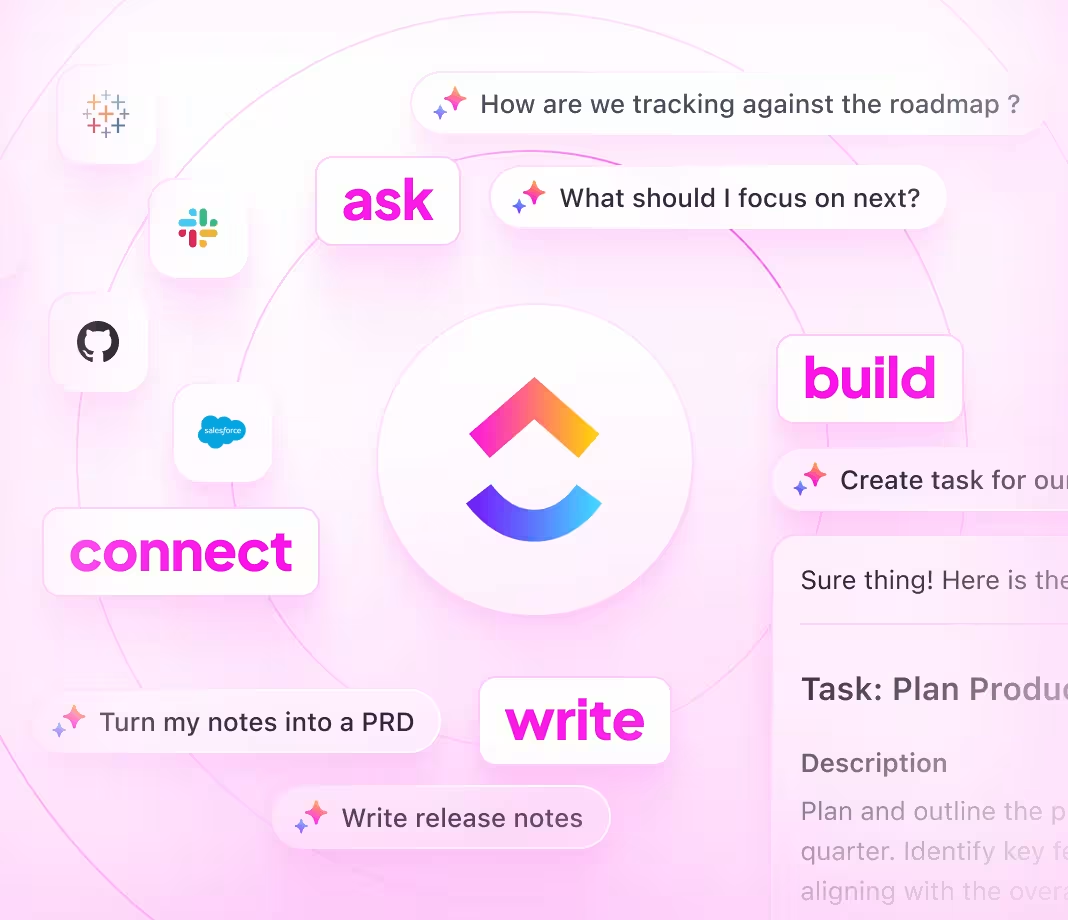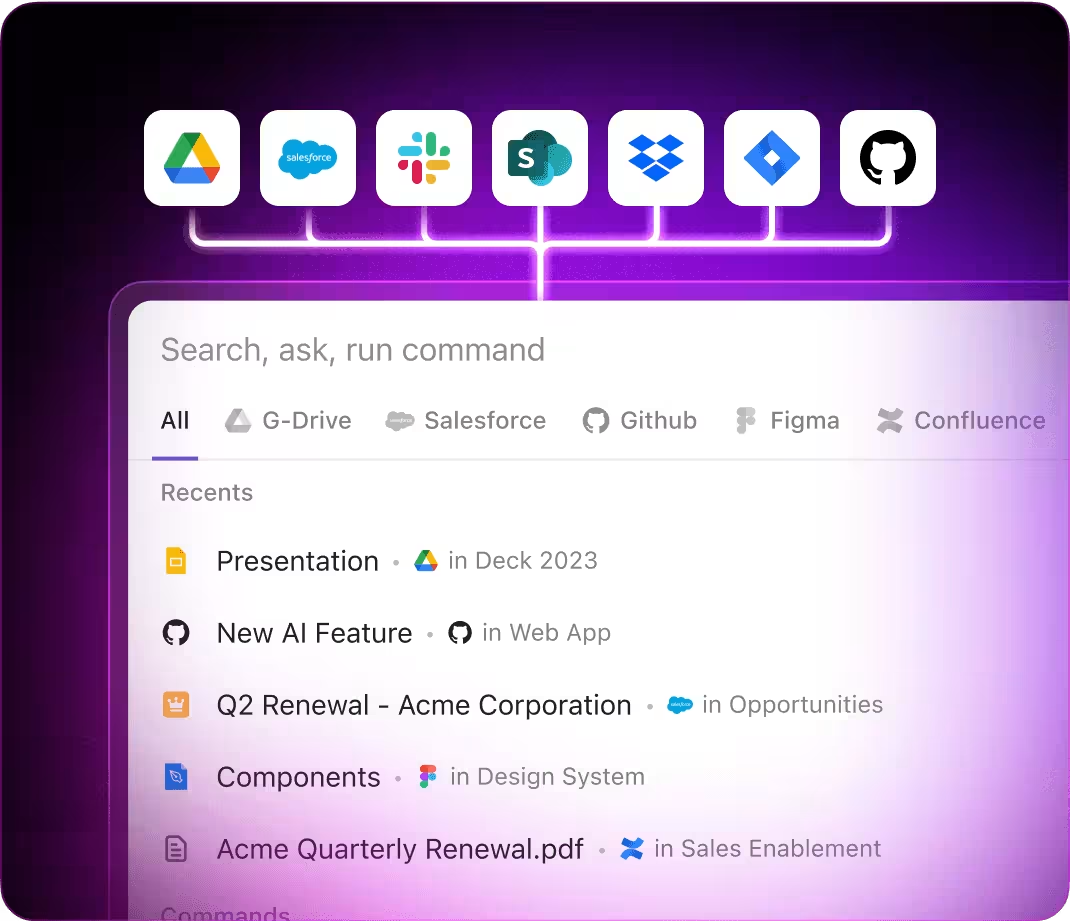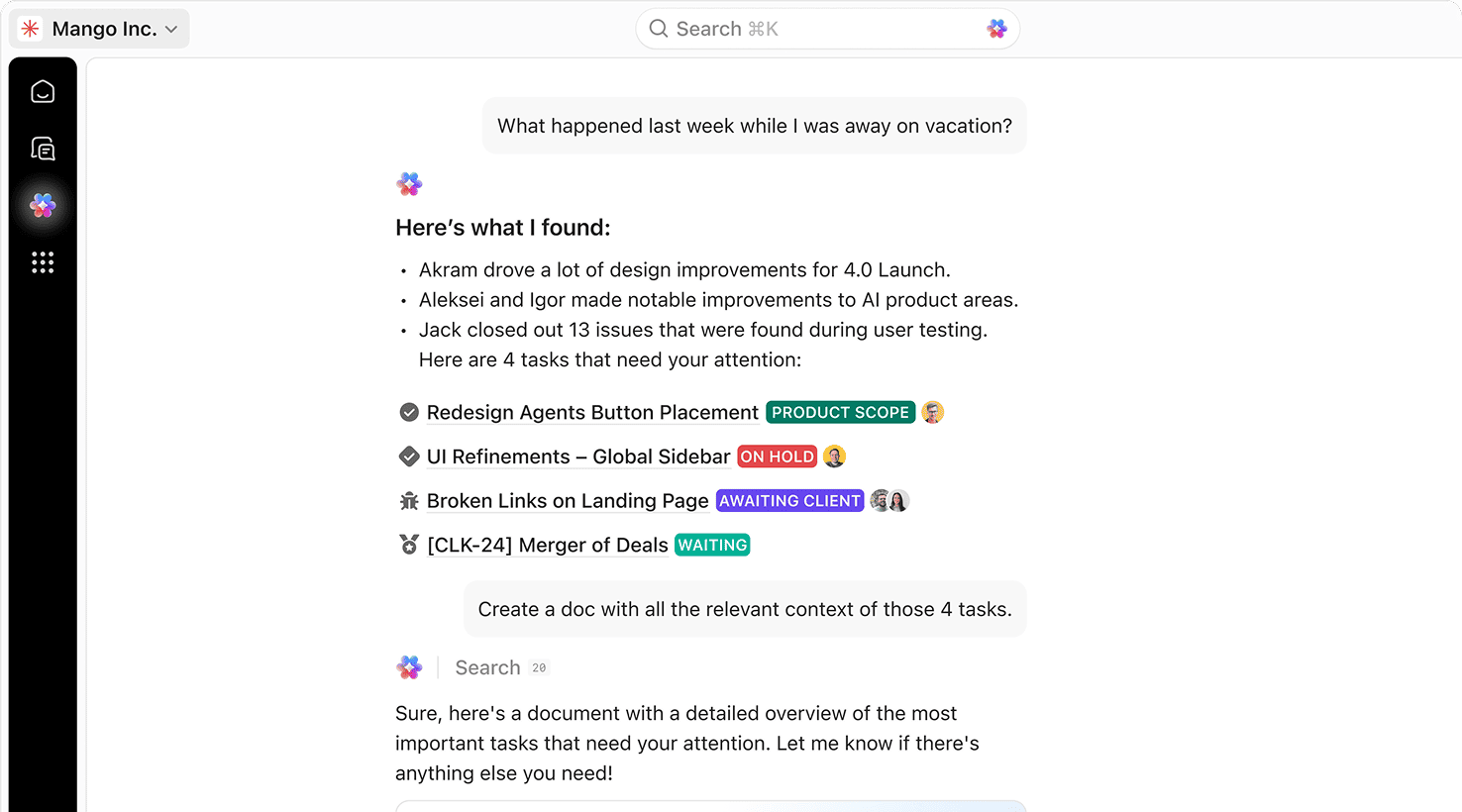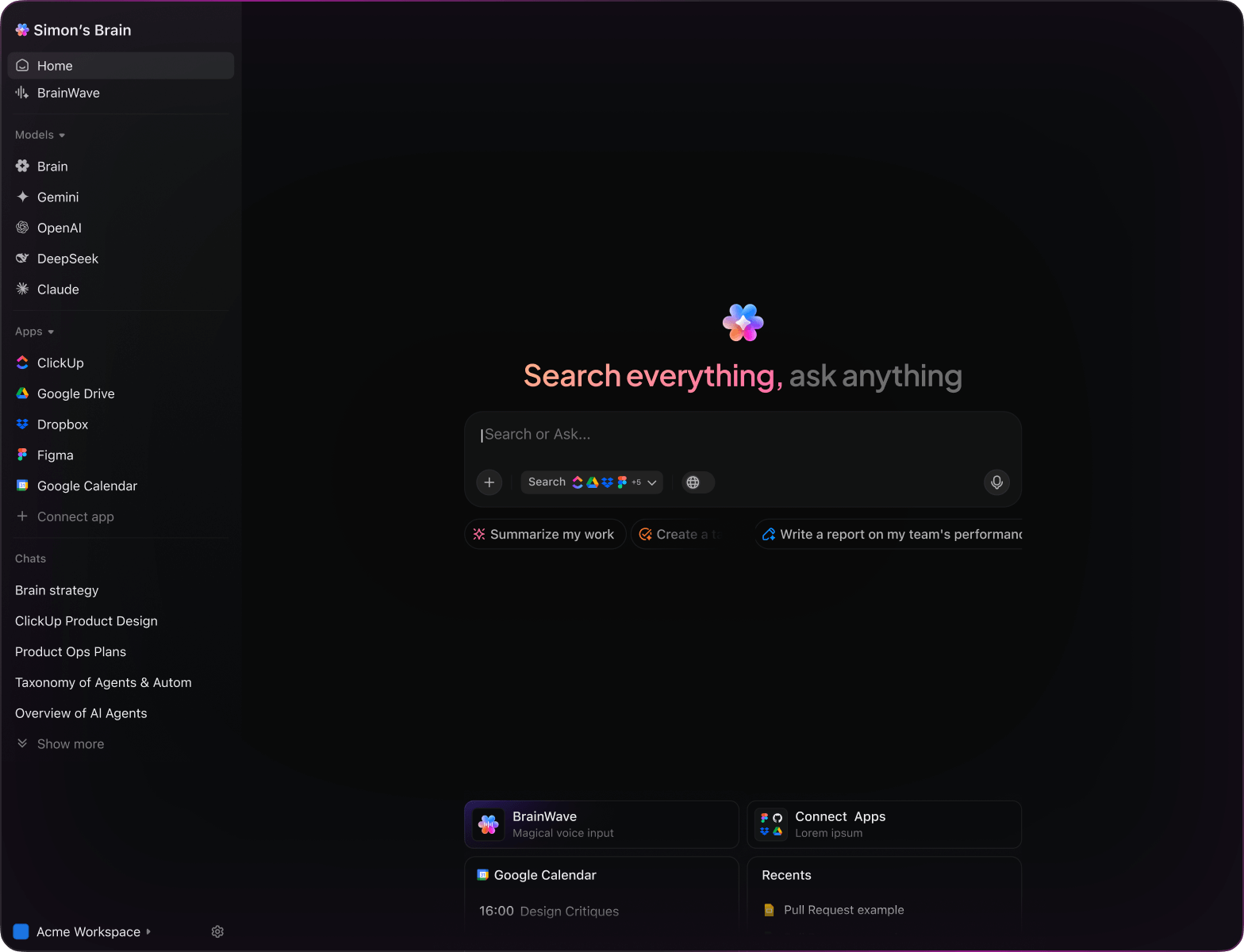AI Project Risk Management
How to Use AI Project Risk Management Plan Generator
Explore how AI transforms risk planning—from identifying threats to crafting mitigation strategies. Tools like ClickUp Brain empower you to generate comprehensive risk plans effortlessly.

Trusted by the world’s leading businesses
AI in Risk Management
What Is an AI Project Risk Management Plan Generator?
An AI Project Risk Management Plan Generator automates creating detailed risk plans tailored to projects' unique challenges. Traditionally, risk plans required manual data gathering, extensive stakeholder input, and periodic updates that were time-consuming and prone to omission.
AI changes this landscape by analyzing project data, past risks, and industry standards to build dynamic, actionable risk management plans instantly. Simply prompt the AI with your project scope and constraints, and it generates a structured plan covering risk identification, assessment, and mitigation.
Integrated with platforms like ClickUp Brain, these AI tools not only produce plans but also keep them synchronized with your project workflow, ensuring real-time relevance and team alignment.
ClickUp Brain vs Traditional Tools
Why Choose ClickUp Brain for AI Risk Planning
ClickUp Brain offers a seamless, integrated approach—minimizing manual overhead and maximizing actionable insights.
Conventional Risk Management Tools
- Isolated processes: Risk plans created separately from project workflows, leading to disconnects.
- Static documentation: Plans often stored as PDFs or spreadsheets, lacking real-time updates.
- Manual updates: Changes require tedious reviews and edits.
- Limited collaboration: Difficult for teams to contribute or stay informed.
- Basic templates: Generic risk categories without adaptive intelligence.
ClickUp Brain Advantages
- Embedded in your projects: Generates risk plans linked directly to tasks and milestones.
- Dynamic updates: Plans evolve automatically as project variables change.
- Collaborative environment: Teams can review, comment, and adjust risk items live.
- AI-powered insights: Leverages historical data and industry benchmarks for precise risk assessment.
- Brain Max customization: Tailor risk logic and thresholds to your organization's needs.
Step-by-Step Guide
How to Generate an AI Project Risk Management Plan
Follow these steps to create a comprehensive, adaptive risk plan using ClickUp Brain.
1. Gather Project Context and Data
Traditional approach: Manually compiling project scope, timelines, and stakeholder input from disparate sources.
With ClickUp Brain:
The AI scans your project workspace—tasks, documents, and goals—to extract relevant details automatically. Simply ask: “Generate a risk plan for the upcoming software development sprint.”
2. Identify and Analyze Risks with AI
Traditional approach: Teams brainstorm risks, often missing hidden or emerging threats.
With ClickUp Brain:
AI evaluates historical project data, dependencies, and external factors to highlight potential risks and their impact levels—delivering a prioritized risk list based on real insights.
3. Develop Mitigation Strategies
Traditional approach: Risk responses are manually crafted and documented.
With ClickUp Brain:
AI suggests tailored mitigation actions, contingency plans, and assigns ownership based on your team’s capacity and expertise, streamlining risk response planning.
4. Monitor and Update Risk Plan Dynamically
Traditional approach: Risk plans become outdated as projects evolve, requiring frequent manual revisions.
With ClickUp Brain:
Risk statuses and mitigation progress update in real-time alongside project changes, ensuring your risk management remains proactive and effective.
Elevate Your Risk Planning with AI
Replace cumbersome spreadsheets with intelligent, adaptive risk management powered by ClickUp Brain.






Use Cases
3 Impactful Use Cases for AI Project Risk Management Plan Generator
Discover how industry professionals leverage AI risk planning to safeguard projects and drive success.
Use case 1
Proactive Risk Identification in Large-Scale Infrastructure Projects
Project managers use AI to uncover hidden risks early—from regulatory changes to supplier delays—allowing timely interventions that prevent costly setbacks.
This insight creates a resilient project foundation aligned with compliance and safety standards.

Use case 2
Optimizing Risk Response in Agile Software Development
Agile teams harness AI to continuously assess sprint risks, adapt mitigation tactics, and maintain velocity without compromising quality.
This dynamic approach keeps development aligned with shifting requirements and stakeholder expectations.

Use case 3
Enhancing Governance in Financial Services Projects
Compliance officers integrate AI-generated risk plans to ensure projects meet stringent regulatory frameworks, minimizing exposure and audit risks.
It fosters transparency and accountability across teams and stakeholders.

Key Features of AI Risk Management Generator
What Sets a Superior AI Project Risk Management Plan Generator Apart?
Explore essential capabilities that empower robust, adaptive risk planning.
Natural Language Risk Input
Describe your project risks and constraints in plain language for instant plan generation.
Real-Time Data Integration
Automatically syncs with project updates to keep risk plans current.
Workflow Connectivity
Links risk items to tasks, milestones, and documentation for full visibility.
Customizable Risk Frameworks
Adapt risk categories, thresholds, and response templates to your organizational standards.
Predictive Risk Analytics
Leverages historical data and AI models to forecast risk probability and impact.
Collaborative Risk Management
Enables team input, real-time editing, and transparent communication.
Transform Your Risk Strategy
Empower your team with AI-driven risk management—focus on solving issues while AI manages the complexity.






FAQs